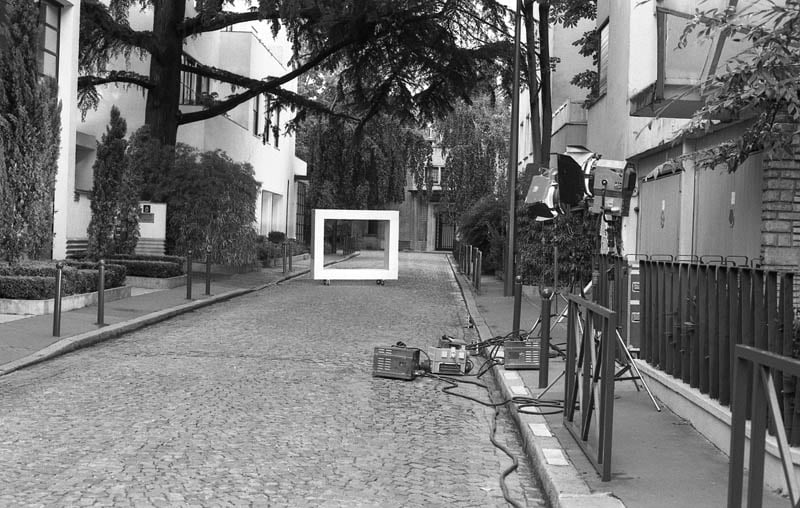
© » KADIST
Sandra Monterroso
Drawing & Print (Drawing & Print)
Presented as part of a recent group of works titled The Paradox of Healing, Rhombus for Healing No. 2 by Sandra Monterroso brings together several of the artist’s interests: the use of ritual and medicinal elements; the conciliation of Western and indigenous formal languages; and more recently, sewing as a recognition and celebration of her maternal lineage. The series as a whole and this painting in particular continue her interest in textiles as visual references and cultural tools to address her native Guatemala’s complex political and cultural histories.

© » KADIST
Jordan Ann Craig
Something To Do With Being Held by Jordan Ann Craig is inspired by a Cheyenne bead bag. Intrigued by the two shades of blue used for the source object (a deep dusty blue and a bold vivid cobalt blue) the artist replicated these shades in her painting. Craig then added in her own colors, including the pink-orange hues, to achieve a bold but soft quality about the work, as she states that she intended the work to convey vulnerability.

© » KADIST
Asli Çavusoglu
In the exhibition Pink as a Cabbage / Green as an Onion / Blue as an Orange , Asli Çavusoglu pursues her work on color to delve into an investigation into alternative agricultural systems and natural dyes made with fruits, vegetables, and plants cultivated by the farming initiatives she has been in touch with. Yet, rather than formulating the history of a particular color, the artist thinks through color, bringing together the various stories and models numerous farming initiatives in Turkey. The fabrics – each corresponding to a unique initiative – evoke the question: How have the social uprisings in Turkey during the last decade shaped the way we reimagine sites of everyday resistance?

© » KADIST
Asli Çavusoglu
In the exhibition Pink as a Cabbage / Green as an Onion / Blue as an Orange , Asli Çavusoglu pursues her work on color to delve into an investigation into alternative agricultural systems and natural dyes made with fruits, vegetables, and plants cultivated by the farming initiatives she has been in touch with. Yet, rather than formulating the history of a particular color, the artist thinks through color, bringing together the various stories and models numerous farming initiatives in Turkey. The fabrics – each corresponding to a unique initiative – evoke the question: How have the social uprisings in Turkey during the last decade shaped the way we reimagine sites of everyday resistance?
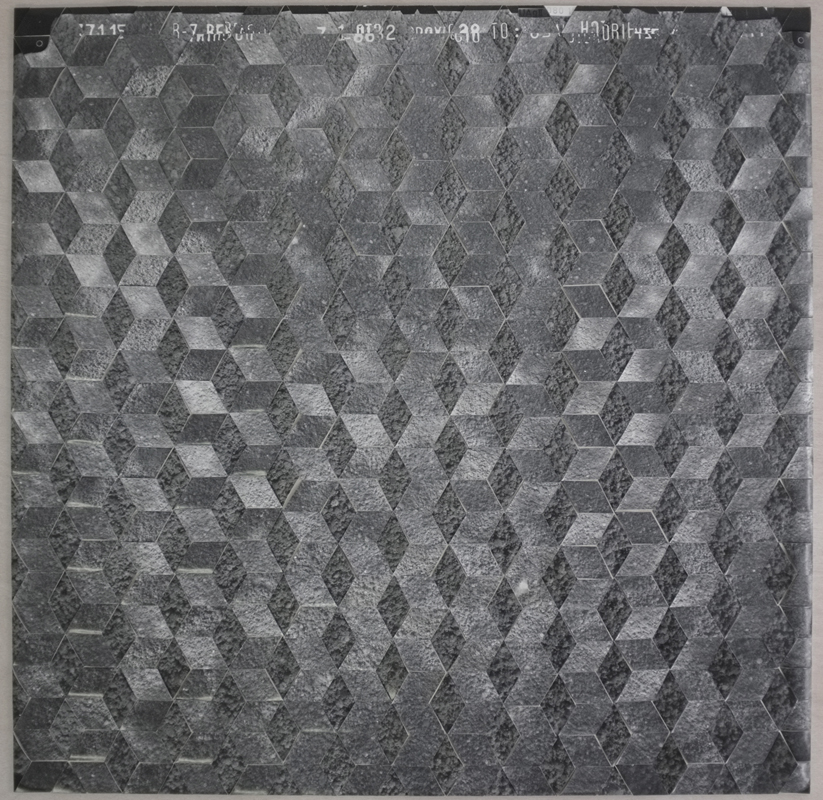
© » KADIST
Rometti Costales
Drawing & Print (Drawing & Print)
The three cut-outs are made of three aerial photographs coming from the archives of the Ecuadorian Military Geographic Institute. These are views of the Amazon forest. The photographs are cut following an optical illusion pattern called “reversible cubes” or “tumbling blocks”, based on the Necker cube, a multistable object of psychophysics that is constantly switching perspectives.

© » KADIST
Clément Rodzielski
Drawing & Print (Drawing & Print)
These photographs are installation shots of the exhibition De A à B, de B à P at Bielefelder Kunstverein (13 November 2010-30 January 2011). There, Clément Rodzielski had chosen to exhibit the series called Miroirs noirs ( Black Mirrors , black and white abstract screen prints) which is emblematic of his work. The piece of painted wood was not shown to the public; it moves and invests the space enigmatically.

© » KADIST
John Morris
Drawing & Print (Drawing & Print)
Untitled was part of the 2002 exhibition “Drawings for the Austrian School” held at the D’Amelio Terras gallery in New York. For this occasion, Morris created a language of his own by using acrylic, ink, graphite and ballpoint pen on paper. The exhibition title comes from Morris’ interest in the early 20th century Austrian economist Joseph Schumpeter, a one time Austrian Minister of Finance, bank director, and economics professor who taught in Europe and at Harvard University.
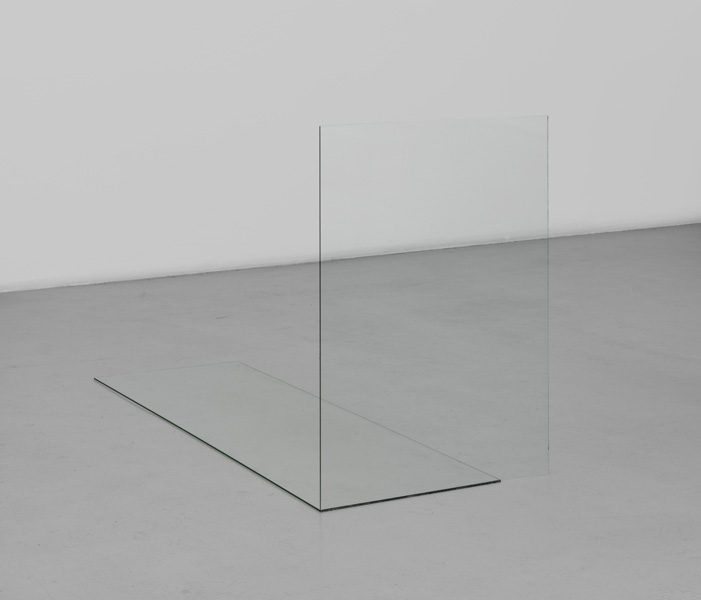
© » KADIST
Kitty Kraus
Composed of two rectilinear pieces of glass, this work is part of a series of sculptures started in 2006. These transparent assemblages are in contact with the walls and floor of the exhibition space. The sculptures of this series are the same dimensions with different combinations.
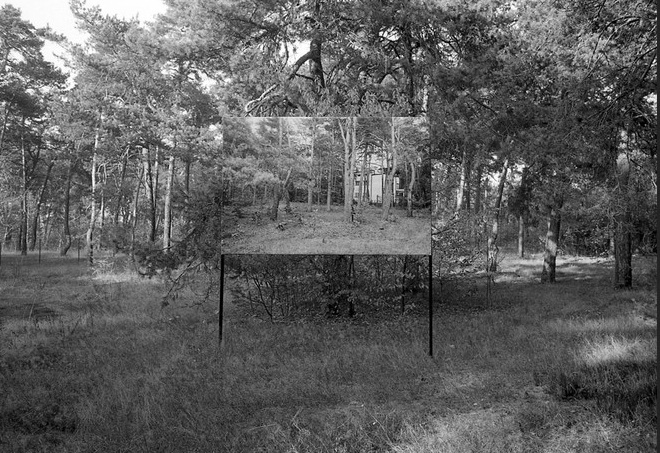
© » KADIST
Charlotte Moth
It is with the eye of a sculptor that Charlotte Moth records modernist architecture and its copies which she encounters during her trips and residences. Photographed in black and white, these architectures seem empty, out of time, and open to any interpretation. The artist creates a classification of her species of spaces, called the “Travelogue”, which is both artwork and tool since it allows her to ceaselessly generate new works.

© » KADIST
Chloé Quenum
The stained glass windows of Chloé Quenum’s Les Allégories evoke the sacred and describe the movement of a rooster in the form of patterns extracted from a wax fabric found in Benin. The in situ motif becomes a motive of situation to materialize a certain idea of the movement. Her work is a form of thought about written language transformed into a sculpted piece.

© » KADIST
Asli Çavusoglu
In the exhibition Pink as a Cabbage / Green as an Onion / Blue as an Orange , Asli Çavusoglu pursues her work on color to delve into an investigation into alternative agricultural systems and natural dyes made with fruits, vegetables, and plants cultivated by the farming initiatives she has been in touch with. Yet, rather than formulating the history of a particular color, the artist thinks through color, bringing together the various stories and models numerous farming initiatives in Turkey. The fabrics – each corresponding to a unique initiative – evoke the question: How have the social uprisings in Turkey during the last decade shaped the way we reimagine sites of everyday resistance?

© » KADIST
Ellen Lesperance
Somewhere Along the Black Sea in the Distant North-East, or in Libya in the Furthest South, The Amazons – The Woman and the Girls Children – Exist Just Outside of the Range of Normal Human Experience

© » KADIST
Maria Taniguchi
Maria Taniguchi works across several media but is principally known for her long-running series of quasi-abstract paintings featuring a stylized brick wall device. Full of subtle gradations and low-key modulations, these are her trademark: a sustained, reiterative practice, steeped in repetition but carefully attuned to the economies and the sculptural presence of painting. Her approach to painting is conceptual.
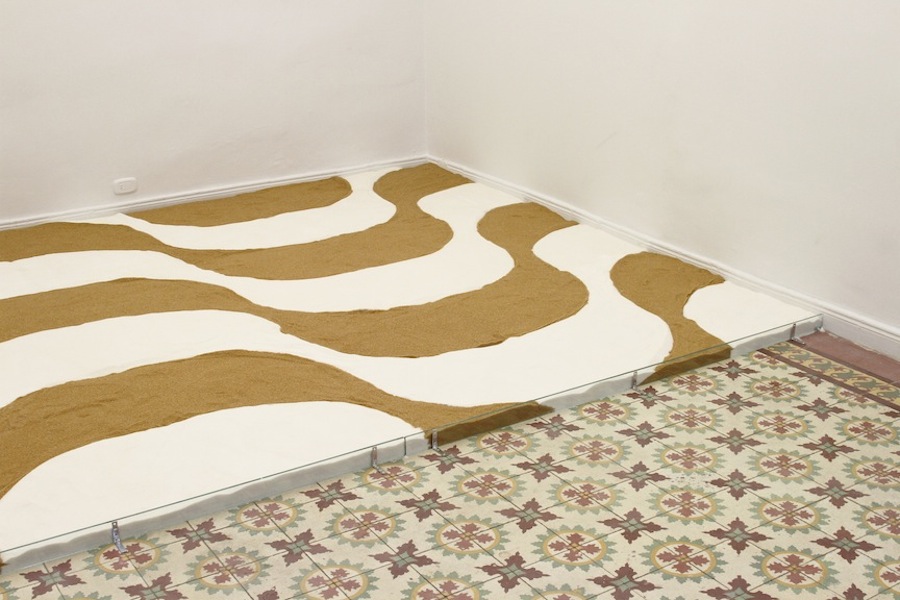
© » KADIST
Felipe Arturo
Defined as entropy, the second law of thermodynamics proposes that energy is more easily dispersed than it is concentrated. One basic illustration of entropy is to imagine white and black sand: once mixed together, it is highly unlikely that the contrasting grains of sand can be separated and restored to their original distinct color groups. Arturo’s Trópico Entrópico ( Entropic Tropics , 2012) considers the colonization of the American continent as a similarly irreversible process of cultural entropy.
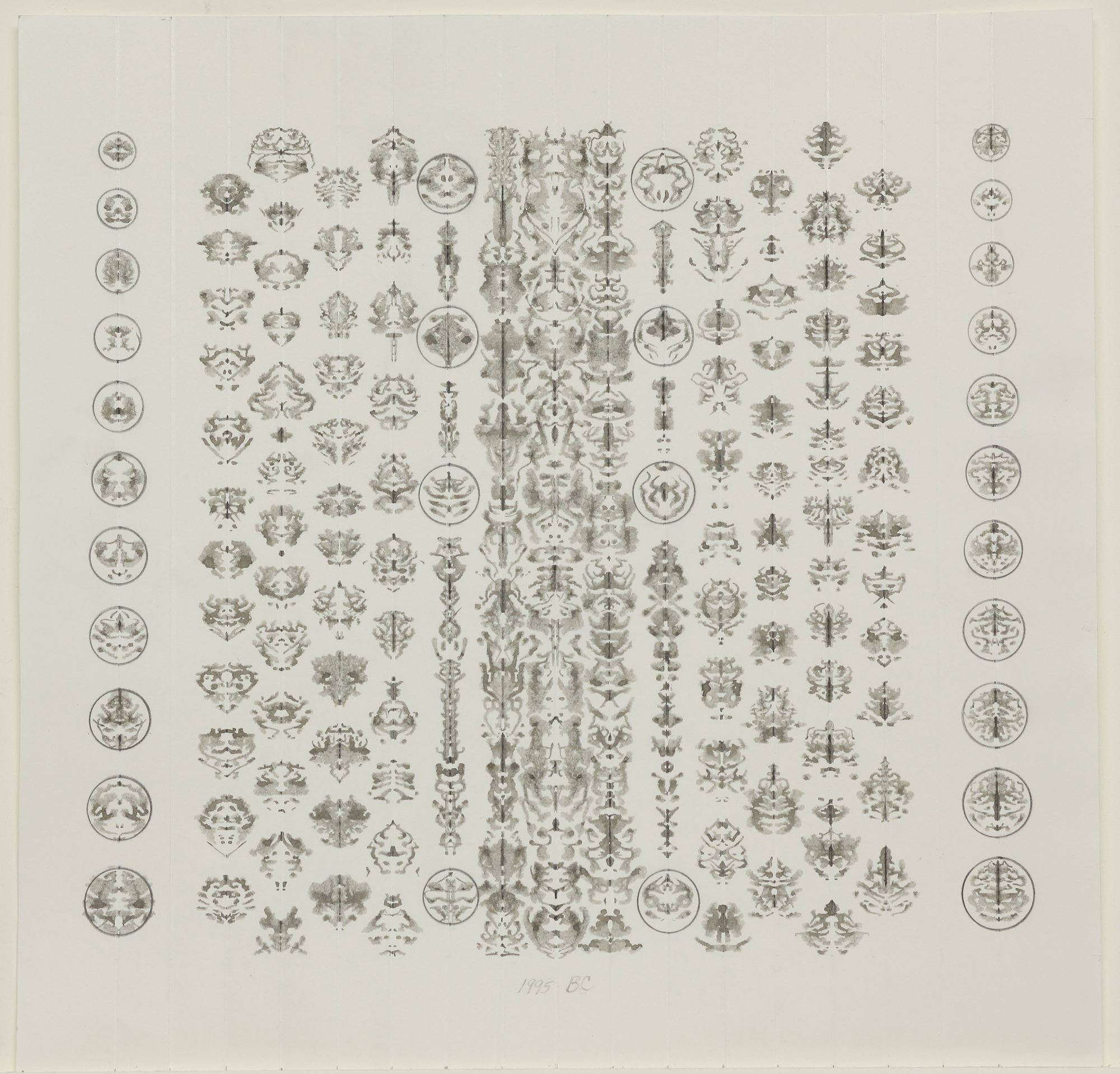
© » KADIST
Bruce Conner
Drawing & Print (Drawing & Print)
Bruce Conner is best known for his experimental films, but throughout his career he also worked with pen, ink, and paper to create drawings ranging from psychedelic patterns to repetitious inkblot compositions. Untitled Inkblot Drawing (CT-1491) (1995) is representative of his aspect of his practice. It is a formal exploration related to many different things: the Rorschach inkblot testing used by psychologists, Japanese calligraphy, Egyptian hieroglyphs, and the intricate patterning Conner saw everywhere in the world around him.
Maria Taniguchi
Throughout her paintings, sculptures, and videos, Maria Taniguchi unpacks knowledge and experience—connecting material culture, technology, and natural evolution—and investigates space and time, along with social and historical contexts...
Rometti Costales
Rometti Costales is an artistic collaboration between Julia Rometti and Victor Costales that began in 2007...
Jordan Ann Craig
Jordan Ann Craig is a Northern Cheyenne artist born and raised in the Bay Area; she invests her work with a strong interest in Indigenous culture and the history of its destruction by settlers...
Kitty Kraus
Kitty Krauss has a very particular outlook on Minimal and Constructivist Art...
Sandra Monterroso
Sandra Monterroso is a Guatemalan artist of Maya Q’eqchi’ decent...
Charlotte Moth
Charlotte Moth has been constituting an image bank since 1999...
John Morris
John Morris practices what critic Allan Weiss calls “ poetics of the ad infinitum” an ecstatic but precise doodling in which handmade marks stand for unrepresentable holism...
Ellen Lesperance
Ellen Lesperance begins with archival footage of various activist events throughout history...
Felipe Arturo
- year born: 1979
- gender: male
- nationality: Colombian
- home town: Bogota, Colombia
Bruce Conner
- location: San Francisco, California
- year born: 1933
- gender: male
- nationality: American
- home town: McPherson, Kansas
-
1990-1999
Bruce Conner
Drawing & Print
1995(Drawing & Print) Bruce Conner is best known for his experimental films, but throughout his career he also worked with pen, ink, and paper to create drawings ranging from psychedelic patterns to repetitious inkblot compositions...
-
2010-2019
Clément Rodzielski
Drawing & Print
2011(Drawing & Print) These photographs are installation shots of the exhibition De A à B, de B à P at Bielefelder Kunstverein (13 November 2010-30 January 2011)...
Charlotte Moth
2012It is with the eye of a sculptor that Charlotte Moth records modernist architecture and its copies which she encounters during her trips and residences...
Felipe Arturo
2012Defined as entropy, the second law of thermodynamics proposes that energy is more easily dispersed than it is concentrated...
Rometti Costales
Drawing & Print
2013(Drawing & Print) The three cut-outs are made of three aerial photographs coming from the archives of the Ecuadorian Military Geographic Institute...
Maria Taniguchi
2015Maria Taniguchi works across several media but is principally known for her long-running series of quasi-abstract paintings featuring a stylized brick wall device...
Chloé Quenum
2017The stained glass windows of Chloé Quenum’s Les Allégories evoke the sacred and describe the movement of a rooster in the form of patterns extracted from a wax fabric found in Benin...
Jordan Ann Craig
2019Something To Do With Being Held by Jordan Ann Craig is inspired by a Cheyenne bead bag...
-
2020-2029
Asli Çavusoglu
2020In the exhibition Pink as a Cabbage / Green as an Onion / Blue as an Orange , Asli Çavusoglu pursues her work on color to delve into an investigation into alternative agricultural systems and natural dyes made with fruits, vegetables, and plants cultivated by the farming initiatives she has been in touch with...
Asli Çavusoglu
2020In the exhibition Pink as a Cabbage / Green as an Onion / Blue as an Orange , Asli Çavusoglu pursues her work on color to delve into an investigation into alternative agricultural systems and natural dyes made with fruits, vegetables, and plants cultivated by the farming initiatives she has been in touch with...
Asli Çavusoglu
2020In the exhibition Pink as a Cabbage / Green as an Onion / Blue as an Orange , Asli Çavusoglu pursues her work on color to delve into an investigation into alternative agricultural systems and natural dyes made with fruits, vegetables, and plants cultivated by the farming initiatives she has been in touch with...
Sandra Monterroso
Drawing & Print
2023(Drawing & Print) Presented as part of a recent group of works titled The Paradox of Healing, Rhombus for Healing No...

